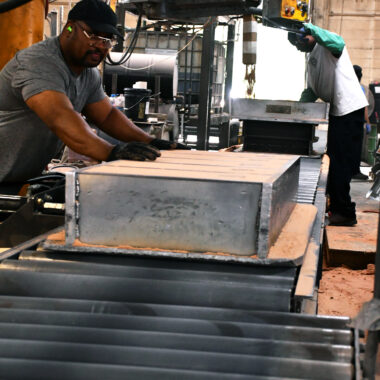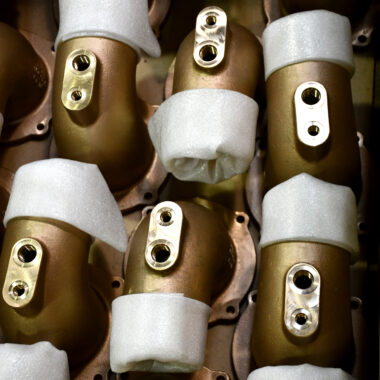Crafting Excellence: Just How to Achieve High-Quality Light Weight Aluminum Castings Each Time
In the realm of light weight aluminum spreading, the search of excellence is a continual trip that requires a thorough technique and an eager understanding of the details entailed. Accomplishing regular top quality aluminum spreadings demands a detailed understanding of the processes, from picking the suitable alloy to executing exact mold designs and diligently regulating casting parameters.
Understanding Aluminum Casting Procedures
Light weight aluminum casting procedures, essential in the manufacturing industry, include the elaborate transformation of liquified aluminum right into strong types with a series of meticulously regulated actions. Comprehending these procedures is critical to accomplishing top quality light weight aluminum spreadings consistently - about aluminum casting. The main approaches used in aluminum casting are die casting, sand casting, and investment spreading

Each of these processes has its advantages and is chosen based on variables like complexity, quantity, and desired finish of the light weight aluminum casting. about aluminum casting. Comprehending the ins and outs of these approaches is critical for producers intending to generate top quality light weight aluminum castings continually
Selecting the Right Aluminum Alloy
Picking the proper light weight aluminum alloy is a critical decision in the manufacturing of high-grade light weight aluminum spreadings. When choosing a light weight aluminum alloy for casting, it is crucial to think about the details demands of the application to ensure optimum performance.
One of the most generally used aluminum alloys for spreading is A356 - about aluminum casting. For applications needing high stamina, 7075 light weight aluminum alloy is a prominent choice due to its outstanding strength-to-weight proportion.
Along with mechanical residential or commercial properties, factors to consider such as expense, availability, and post-casting processes should additionally affect the option of the best light weight aluminum alloy. By meticulously reviewing these variables, manufacturers can make sure the manufacturing of top quality light weight aluminum castings that meet the preferred specs.
Implementing Correct Mold And Mildew Design
Creating an effective mold style is essential for making certain the effective manufacturing of high-grade aluminum castings. Appropriate mold and mildew design plays a substantial duty in accomplishing the wanted qualities of the end product. To execute a successful mold design, variables such as material circulation, cooling rates, and component geometry must be meticulously taken into consideration.
One key element of mold get more design is guaranteeing correct filling and solidification of the light weight aluminum within the mold and mildew dental caries. This includes developing jogger and gating systems that facilitate smooth steel circulation and avoid defects such as air entrapment or incomplete filling. In addition, integrating cooling channels right into the mold style helps regulate solidification rates and minimize the danger of porosity or shrinkage issues.

Controlling Casting Parameters

Ensuring Post-Casting High Quality Checks
To preserve the high quality of aluminum castings, detailed post-casting top quality checks are essential. After the spreading Resources procedure is completed, it is vital to make sure that the last products fulfill the wanted standards and requirements.
Dimensional precision is one more crucial element that should be verified throughout post-casting quality checks. Measurements of key measurements and resistances ought to be taken to confirm that the spreadings adapt the needed specs. In addition, mechanical properties such as solidity, tensile stamina, and effect resistance might require to be assessed through product screening to guarantee that the castings possess the necessary stamina and durability for their intended application.
Verdict
To conclude, attaining high-quality light weight aluminum castings calls for a thorough understanding of the spreading procedures, choosing the ideal alloy, developing mold and mildews efficiently, controlling spreading specifications thoroughly, and conducting post-casting high quality checks vigilantly. By adhering to these actions, makers can consistently produce aluminum castings that meet the greatest criteria of quality and performance.
Accomplishing regular high-grade aluminum spreadings requires a detailed understanding of the procedures, from choosing the proper alloy to executing exact mold and mildew styles and diligently regulating spreading criteria. The main techniques utilized in aluminum casting are pass away spreading, sand spreading, and investment spreading.
Financial investment casting, also known as precision casting, involves developing wax patterns that are covered in ceramic to form mold and mildews.Choosing the appropriate aluminum alloy is an important decision in the manufacturing of top notch aluminum castings.Making certain accurate control over spreading specifications is important for keeping uniformity and high quality in aluminum casting manufacturing.